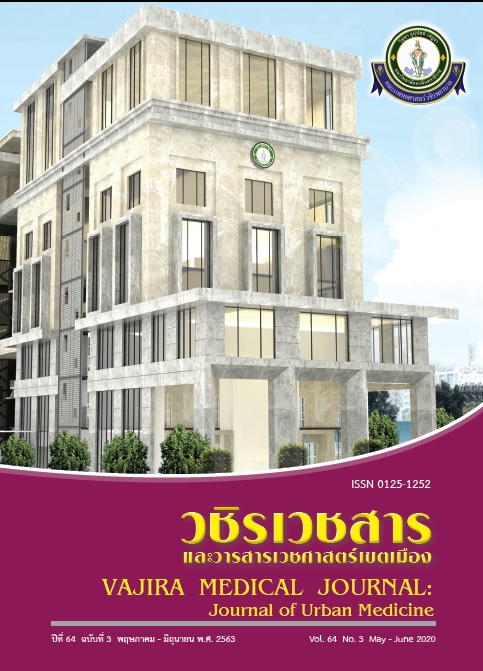Sidewalk Development for Convenient Bangkok Metropolitan: A Case Study of Sidewalk Along BTS Light Green Line (Silom Line)
Main Article Content
Abstract
Objectives: To study the physical aspect and convenience of walking and to analyze the behavior, satisfaction and needs of pedestrians in order to propose ways to improve sidewalks in Bangkok.
Methods: This research was a quantitative research coupled with qualitative research using the ADB Pedestrian Preference Survey Form adapted to suit local conditions. The survey was conducted for each of the section from one station to another of the light green sky train line (Silom line) to evaluate convenience of walking (Walkability index) for each section of the sidewalk. Notes, video and notes were taken in order to use the information to analyze for problems and obstacles along the sidewalk. Questionnaire on behavior and satisfaction of pedestrian was conducted on samples without using probability theory (Non-Probability) employing Haphazard or Accidental Sampling of pedestrians on 12 sidewalk sections, 17 samples each section for a total of 204 samples. The questionnaire consists of 2 parts: part 1 is basic information and part 2 is the behavior and satisfaction of pedestrians. The questionnaire was multiple choices and preference ranking. Data were analyzed by frequency distribution percentage.
Results: Survey results of walking convenience found obstacles to walking on sidewalk include (1) lack of equipment and facilities for the disabled (ramp, blind block) (2) safety from crime (3) equipment and facilities for pedestrians. Questionnaire on satisfaction of pedestrian have the following results: (1) Ease of walking was low (55.39%) (2) Pedestrian safety was low (58.33%) (3) Improvements needs were safety from crime (street light, CCTV, and risky spots 22.06%), width and surface quality of sidewalk (21.08%). If there is improvement to sidewalk, there would be high preference to use the sidewalks (61.76%)
Conclusion: Obstacles that cause walking inconvenience and in line with the preference of pedestrians to improve sidewalks are (1) Lack of equipment and facilities for pedestrians and disabled people (2) Safety from crime (3) Continuation of sidewalk, pedestrian crossing, obstacles to walking and driving on sidewalk. Improvements to the sidewalk will increase number of pedestrians leading to better health of people and help reduce road traffic and pollution in Bangkok.
Downloads
Article Details
References
Rojrudakorn P. Streetscape & Urbanization in Bangkok. Executive Journal 2012: 145-51.
Sittiwut P.The Study of Road Network Development for Culture tourism Destination in the Old City of Nan. [Dissertation]. Bangkok: Kasetsart University; 2011.
Sangsila S. The pedestrain behavior of community around mass rapid transit station. [Dissertation]. Bangkok : Silpakorn University;2012.
Urban Design and Development Center. The Urban Change Agent : Goodwalk [Internet]. 2015 [cited 2019 Mar 15]. Available from: http://www.uddc.net/
Leather J, Fabian H, Gota S, Mejia A. Walkability and Pedestrian Facilities in Asian Cities State and Issues. Manila Philippines: Asian Development Bank; 2011.
Minhas P. and Poddar A. Walkability Index By Global Walkability Index Method. Internation Research Journal of Engineering and Technology (IRJET)[Internet]. 2017 [cited 2019 Mar 15]. Available from: https://www.irjet.net/archives/V4/i7/IRJET-V4I7597.pdf


